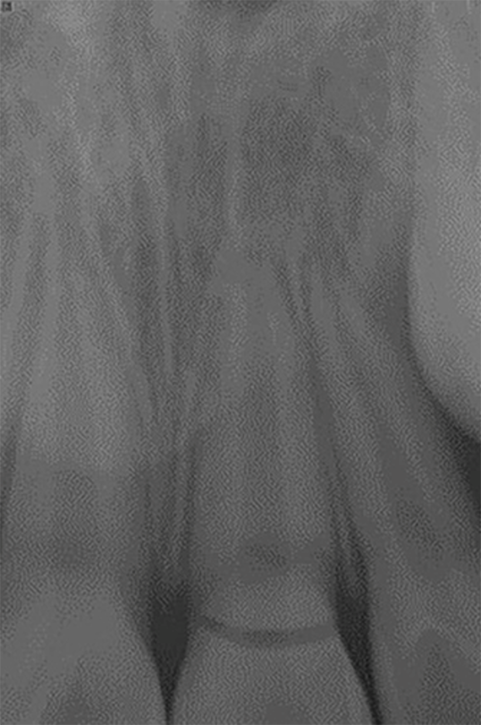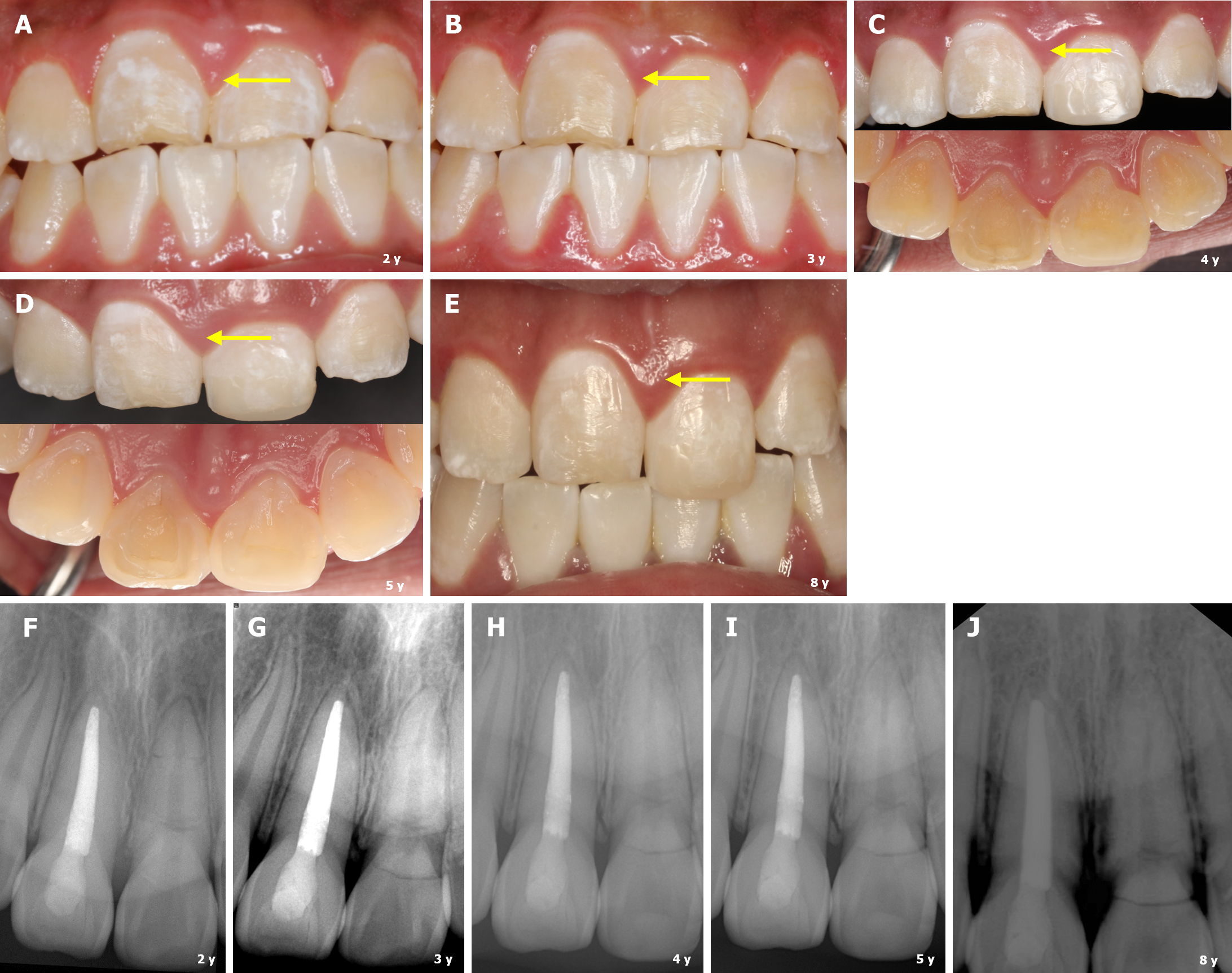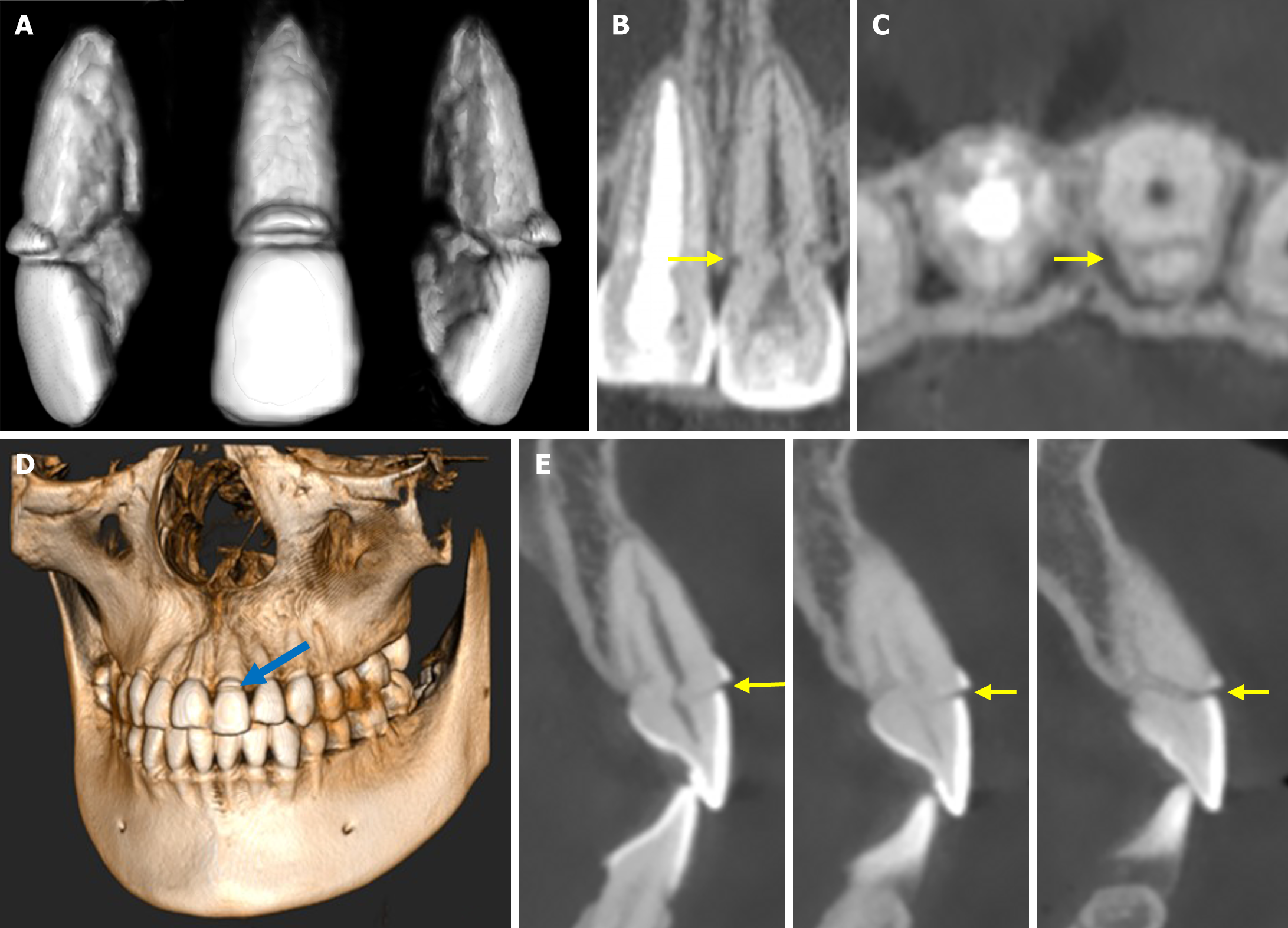Copyright
©The Author(s) 2025.
World J Clin Cases. Jan 26, 2025; 13(3): 98104
Published online Jan 26, 2025. doi: 10.12998/wjcc.v13.i3.98104
Published online Jan 26, 2025. doi: 10.12998/wjcc.v13.i3.98104
Figure 1 Periapical radiograph revealed an obvious horizontal fracture line located in the cervical crown of tooth 21, slightly coronal to the level of the alveolar crest.
Figure 2 The apexification of tooth 11 and the prolonged splinting period provided the pulp with stable conditions for progressively healing the fracture lines in tooth 21.
A: A periapical radiolucency indicating pulp necrosis and apical periodontitis of tooth 11 (white arrow) and healing of the fracture lines (yellow arrow); B: The root canal of tooth 11 was dressed with a calcium hydroxide-based paste for 1 month and the healing of the fracture lines (yellow arrow); C: The periapical radiolucency healed and a calcified barrier at the apex of tooth 11 (white arrow). The progressive healing of the fracture lines (yellow arrow) in tooth 21; D: The localized gingival overgrowth of tooth 21 (yellow arrows).
Figure 3 Follow-up clinical views and periapical radiographs from 2015 to 2022, indicated the healed crown-root fracture and a stable prognosis.
A-E: Labial and palatal views of the two involved teeth, which have remained functional and symptomless after removal of the splint (yellow arrow indicating the localized gingival overgrowth); F-J: Periapical radiograph of the teeth showing the progressive increase in calcification within the fracture lines, with no obvious periradicular pathosis.
Figure 4 Cone-beam computed tomography views of the fractured central incisor after 8 years.
Favorable healing occurred not only in the crown-root fracture but also in the additional root fracture. A: The three-dimensional (3D) reconstruction highlights the characteristic fracture patterns. The additional fracture starts at the crestal position and extends vertically within the root and backward in an apical direction; B: Cone-beam computed tomography (CBCT) sagittal image showing hard tissue deposition between the fractured surfaces and bulging into the root canal space (arrow); C: CBCT axial slice showing that the additional root fracture line has been obliterated by calcified tissue (arrow); D: The 3D reconstruction indicates that the narrow enamel gutter was above the level of the alveolar bone crest (blue arrow); E: CBCT sections in the coronal plane show that multiple fracture lines have been obliterated by calcified tissue, the arrow indicating the narrow unfilled enamel gutter.
- Citation: Li N, Ren YY, Tang Y, Yang Q, Meng TT, Li S, Zhang J. Pulp health and calcific healing of a complicated crown–root fracture with additional root fracture in a maxillary incisor: A case report. World J Clin Cases 2025; 13(3): 98104
- URL: https://www.wjgnet.com/2307-8960/full/v13/i3/98104.htm
- DOI: https://dx.doi.org/10.12998/wjcc.v13.i3.98104
















